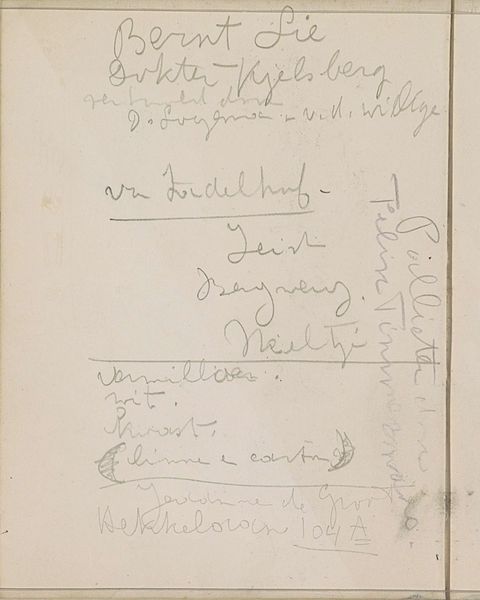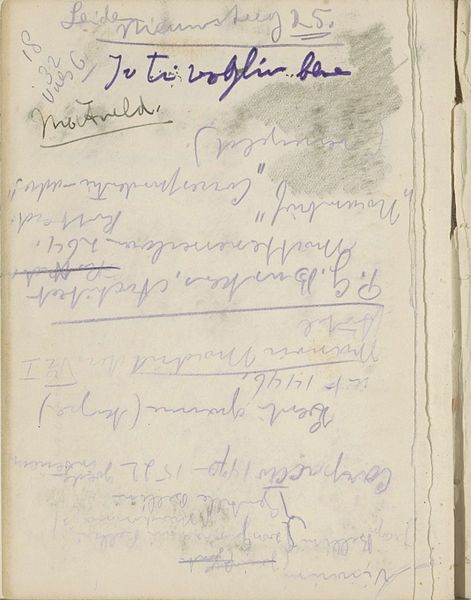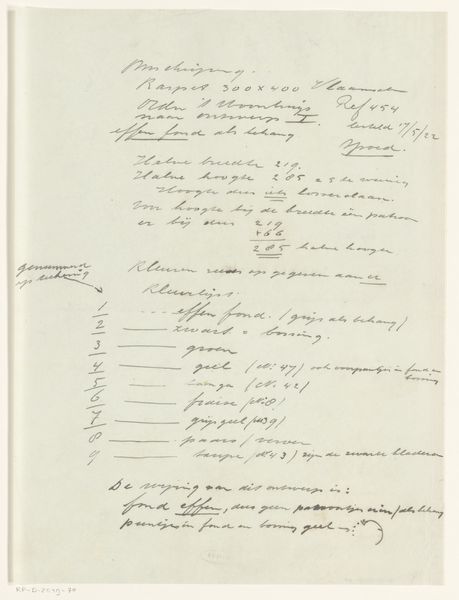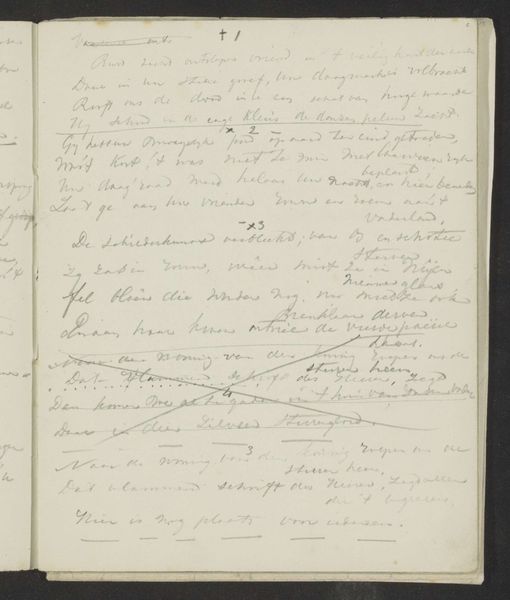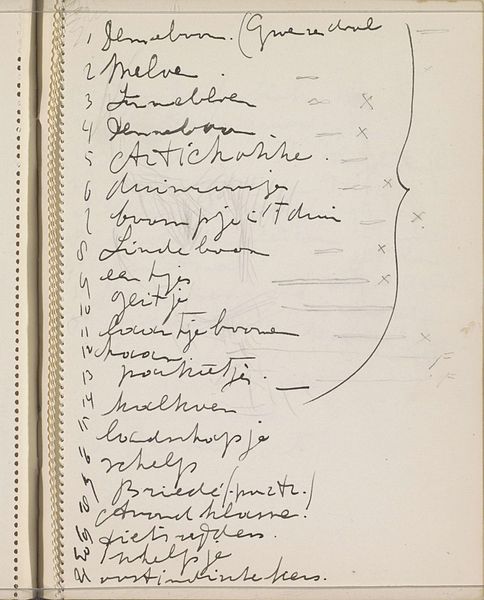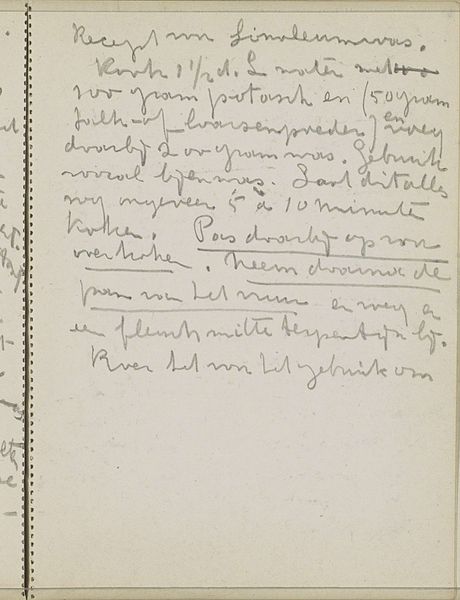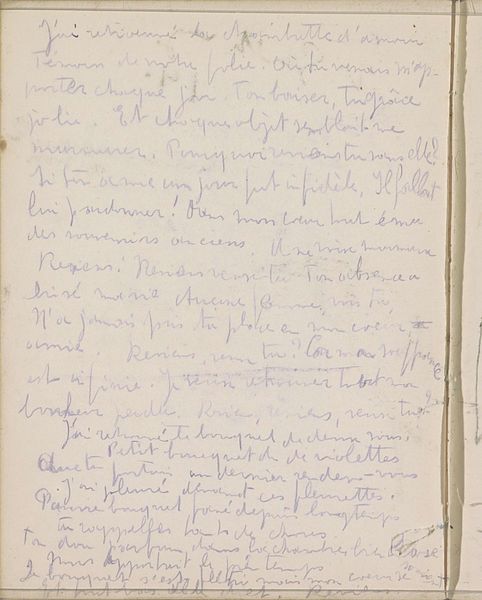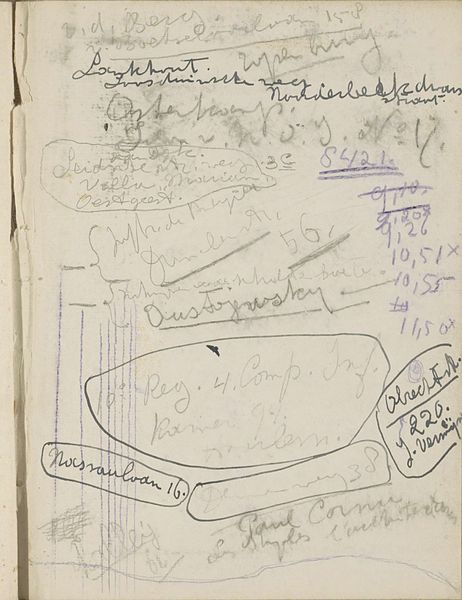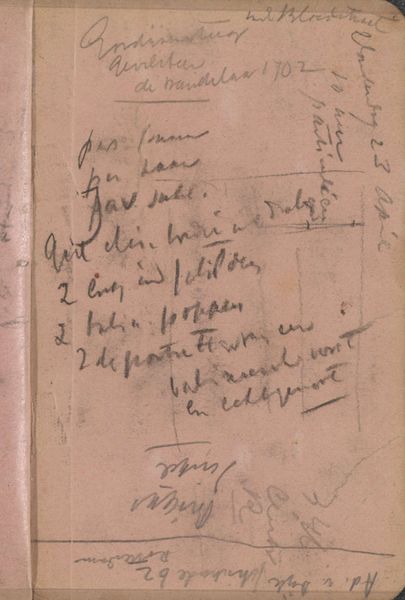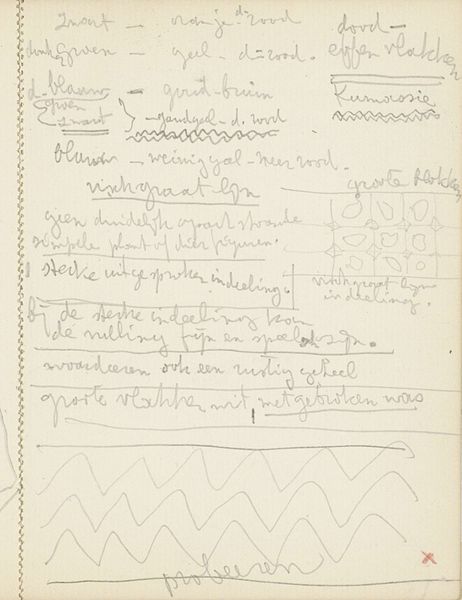
drawing, mixed-media, paper, ink
#
drawing
#
mixed-media
#
hand written
#
hand-lettering
#
hand drawn type
#
hand lettering
#
paper
#
personal sketchbook
#
ink
#
hand-written
#
sketchbook drawing
#
handwritten font
#
sketchbook art
#
small lettering
Copyright: Rijks Museum: Open Domain
Curator: Here we have "List of artworks and carriers" by Reijer Stolk, created sometime between 1906 and 1945. It’s a mixed-media drawing rendered in ink on paper, and it's currently held here at the Rijksmuseum. Editor: My first impression is one of intimate documentation. It's a glimpse into the artist's private process—the light paper, the cursive writing. There's a certain austerity in its function. Curator: Precisely. The artist seems to be meticulously cataloging materials, costs, perhaps even ideas for future pieces. The handwritten lists, replete with various items and what appear to be prices or quantities, demonstrate the more prosaic aspects of artistic creation. Notice the handwritten font. Editor: And it’s vital to remember that during this period, access to materials wasn’t equal. This list serves as a reminder of the resources, both material and economic, that enable artistic practice. Consider, who had the luxury to create art during the world wars? The act of even creating this list would involve specific personal stories related to accessibility, privilege, the impacts of conflict, social capital, and potential collaborations. Curator: True. Still, viewing this piece through a purely formal lens, one must note the compositional aspects of its execution. How Stolk uses the page itself as a framing device for the text and rudimentary numerical notations is integral to understanding the overall composition. It transforms pragmatic data into abstract arrangement. Editor: But the composition itself—the hurried nature of the script, the crossing out, the annotations—speaks to a life and social context defined by constraints and economic considerations. "Zonnebloem – shoccarton", "hyacinth"—what stories are embedded in these ordinary terms? What realities do the numerical figures evoke when related to socio-economic backgrounds? Curator: It would take extensive research to decode all the possible connections and contextual backgrounds. Perhaps Stolk wanted viewers to approach these arrangements as compositional exercises. Editor: Or maybe as a prompt to look past face value and into lived experiences situated during social transformation. Curator: Whatever Stolk’s intention, I’m inclined to value this kind of sketch for the glimpse it gives into material awareness. Editor: For me, the social responsibility it invokes surpasses everything else.
Comments
No comments
Be the first to comment and join the conversation on the ultimate creative platform.



